Главная тема номера. Рубрика в журнале - Вестник Волгоградского государственного университета. Серия 2: Языкознание
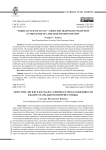
Статья научная
The study is focused on the interaction of criticism and politeness in critical theatre reviews posted on social networks. The sample includes more than 1,000 posts published in a theater lovers group on the VKontakte social network. The concept of polite criticism is introduced in the article. This type of criticism is implemented in the text in several directions. It is established that politeness can bring about modification of the communicative goal, alterations in the genre script, including the omission of aspects that provoke criticism, changes in the narrative strategy, when a critical judgment is placed in the middle of the text, where the severity of criticism is less pungent. The article also describes cases when the object of criticism is shifted by foregrounding the author as the one being criticized, as well as by taking criticism beyond the object that is criticized, i.e. to the level of the situation. It also shows that the situation under consideration can be represented in an abridged format. In linguistic terms, preference is given to lexical and grammatical units that reduce the critical tone of the statement. Logically, concession and contrast are engaged for the criticism to be outplayed by something praiseworthy. Polite criticism results in expressing a critical judgment on the border of bona-fide and non-bona-fide communication.
Бесплатно
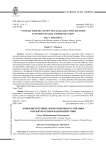
"Конфликтогенные зоны" языкового сознания в межкультурном взаимодействии
Статья научная
Исследование языкового сознания проведено с применением термина «конфликтогенная зона», который связан с комплексом представлений о ценностях определенной культуры, выражаемых средствами национального языка. В статье описаны результаты ассоциативного эксперимента с носителями русского и национальных языков, осуществленного в регионах Российской Федерации - Республиках Татарстан и Саха (Якутия). Эксперимент проведен на родном языке информантов, которым было предложено записать спонтанное слово-реакцию на стимулы-этнонимы. Авторами смоделирован семантический гештальт каждого стимула для каждой группы испытуемых и выделены ассоциаты, составляющие семантические зоны «субъект», «эго», «объект», «характеристика», «действия», «локус», «прочие». По результатам анализа полученных данных определены имеющиеся различия представлений о национальных традициях, семейно-родственных и конфессиональных отношениях, себе и этнических соседях. Установлена зависимость этих представлений от региона проживания и национальной самоидентификации информантов. Показано, что в процессе анализа ассоциативных значений квазиэквивалентных лексем сопоставляемых языков / культур может быть выявлено несовпадение стоящих за ними знаний, которое при межкультурном взаимодействии приводит к конфликтам непонимания (неполного понимания). Результаты исследования могут быть использованы для оптимизации межкультурного общения и предотвращения коммуникативных и иных конфликтов.
Бесплатно
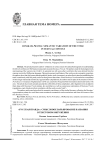
"Русская Правда": смысловое варьирование названия в текстовом окружении
Статья научная
В статье представлены размышления авторов о некоторых причинах, способствующих сложившемуся в русской культуре многомерному пониманию названия известнейшего древнерусского юридического памятника - «Русской Правды». Рассмотрено происхождение и значение слова правда, его словообразовательные связи с производными от того же корня в древнерусском языке. С учетом такой особенности древнего слова, как семантический синкретизм, показано, что лексема правда одновременно обозначает и качества, свойства (справедливость, истину, невиновность), и действие, которое направлено на установление истины и осуществляется в соответствии с истиной (Божией правдой), и закон, регламентирующий такие действия. Поскольку «Русская Правда» бытовала только в составе более крупных текстов (летописей, юридических и других сборников), охарактеризовано ее место в структуре «Мерила праведного» (XIV в.) и Новгородской I летописи младшего извода по Комиссионному списку (XV в.). В статье выявлены семантические особенности названий этих сборников, других законодательных текстов, входящих в них наряду с «Русской Правдой» (устав, закон и др.), а также параллельных наименований самой «Русской Правды» (устав, суд) в их соотношении со словом правда. В результате установлены концептуально значимые семантические компоненты указанных лексем, отражающие представления русичей о мире, создающие устойчивые коннотации и ассоциативные связи и формирующие смысл наименования «Русская Правда».
Бесплатно
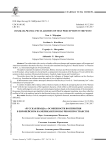
"Русская правда": особенности восприятия в европейском и американском научном пространстве
Статья научная
В статье предложен краткий обзор наиболее известных и актуальных работ европейских и американских исследователей, посвященных такому монументальному правовому тексту Древней Руси, как «Русская Правда». Представлены труды немецких, британских, американских и французских ученых, прежде всего историков и юристов, в которых проводится сопоставительный анализ текста «Русской Правды» с законоуложением других стран того времени (германским, шведским, англосаксонским и франконским правом). Показано, как зарубежные специалисты анализируют влияние на «Русскую Правду» зарубежных правовых традиций (скандинавское воздействие с точки зрения политических отношений). Некоторые авторы предпринимают попытку определить, чем является «Русская Правда»: «местным обычным правом» или воплощением «княжеского права». В ряде работ предложены доказательства эволюции правосудия на Руси путем сравнения текста «Русской Правды» с более поздними памятниками законодательного дискурса, которые отражают переход к большей социальной справедливости. В немногих филологических работах проводится терминологический анализ, основанный на интерпретации сложностей перевода: выявляются группы лексем, наиболее сложных для адекватного перевода, отражающих реалии жизни средневековых русичей; предлагаются пути интерпретации такой лексики.
Бесплатно
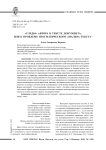
"Следы" автора в тексте документа, или к проблеме прагматического анализа текста
Статья научная
В статье предлагается алгоритм прагматического анализа, его практическое применение показано на материале постановления. Исходная предпосылка состоит в том, что автор документа может обнаруживать себя непосредственно на уровне лексики и опосредованно через выбор форм интенциональных категорий и структурирование текста. При этом учитываются различия прескриптивных и дескриптивных текстов. Алгоритм анализа включает в себя следующие этапы: 1) характеристика участников речевого общения; 2) определение интенции автора документа по наименованию вида документа, по характеру жанрообразующего перформатива, коммуникативным целям образующих текст высказываний и по модальным значениям; 3) выявление оценки а) как отношения автора к действительности и б) как отражения его намерений; 4) рассмотрение интенциональных категорий (лица, времени, эвиденциальности, вида, залога) с целью ответить на вопрос: почему автор останавливает свой выбор именно на той или иной форме категории?; 5) исследование структуры текста. Алгоритм прагматического анализа текста официального документа позволяет выявить интенции автора документного текста на основе анализа средств их репрезентации.
Бесплатно
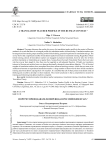
A translation teacher profile in the Russian context
Статья научная
The paper discusses the results of a survey of a translation teacher profile in the context of Russian academia. It reveals that there is no integral profile of a translation teacher in Russia today. Translation teachers can be categorized into certain groups according to their initial training, practical experience in translation and age. The survey shows that a significant number of translation teachers have had no translation training. Regardless of their initial training, almost all translation teachers are engaged in practical translation, however only few of them perform translation or interpreting on a regular basis. Among those who teach Translation Theory there are some who have never been taught it, thus they may be regarded as self-educated theorists. Virtually no translation trainers in Russian universities have ever been professionally educated in translation didactics. 75% of the total number of translation teachers have completed short-time advanced training courses, which does not seem to be sufficient to become an experienced translation teacher. A large number of those who do have initial translation training teach translation copying their own teachers. It is doubtful that all of them possess translation mode of thinking and are able to develop it in their students. The overall conclusion is that a comprehensive system for training and retraining translation teachers is required.
Бесплатно
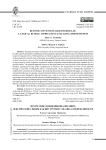
Beyond Conventionalized Formulae: A Lexical Bundle Approach to Analyzing (Im) Politeness
Статья научная
The paper introduces a frequency-driven lexical bundle approach to enhance politeness research by addressing the limitations of traditional corpus pragmatics approaches, which assume pre-defined (im)politeness values for linguistic forms. While politeness is widely recognized as a dynamic context-dependent phenomenon, corpus pragmatics research risks overlooking its variability by focusing on pre-selected politeness formulae, such as thank you, please, sorry, etc. The lexical bundle approach builds on the concept of conventionalization, defined as the process by which linguistic expressions acquire politeness-related meaning through repeated use in a specific context. The proposed approach focuses on the identification of recurring multi-word sequences (lexical bundles), capturing how they index (im)politeness in discourse. We demonstrate the utility of this approach through a case-study of Wikipedia editors' communication, where politeness is strategically negotiated in collaborative, consensus-driven dialogue. By analyzing discussions from Wikipedia talk pages, we categorize the extracted bundles into two groups: conventionalized politeness formulae, which consistently index collaborative politeness across Wikipedia's editorial discourse (e.g., what do you think, is it possible to) and multifunctional expressions, that manifest variable politeness-related meanings (e.g., why don't you, am I missing something). This distinction reveals how politeness emerges through both stable norms and context-sensitive strategies. Our findings also highlight the capacity of the new approach to bridge Terkourafi's frame-based theory with empirical analysis, offering a replicable framework for studying (im)politeness as a co-constructed interactional practice.
Бесплатно
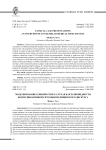
Clinical case presentations: an overview of an exemplar medical speech event
Статья научная
Clinical case presentations are core medical speech events carried out in medical and teaching institutions worldwide among both students and active practitioners. While in most non-English speaking locales these events will usually be communicated in a local language they are also, on set occasions, often performed in English. In order to understand both how and why clinical case presentations are carried out in English in non- English speaking Asian locales, the author visited 8 medical universities and/or affiliated hospitals in 6 Asian countries, observing a total of 36 English clinical case presentations, followed by interviews with 25 different clinical practitioners, teachers, or medical students. The author then analyzed the collected speech event data in terms of Hymes’ (1974) SPEAKING model, augmented by Swales’ (1990) focus upon ‘moves’ in genre analysis, and further informed by Bhatia’s (1994) introduction of a socio-cognitive dimension to genre analysis, in order to develop a well-rounded descriptive synoptic model of how this speech event is both perceived and performed in non-English speaking English settings. It is hoped that these insights can be further applied to the development of English for Medical Purposes (EMP) materials or curricula and that this case may serve as an exemplar for other inquiries into professional, situated ESP speech events.
Бесплатно
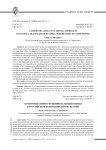
Communicative-functional approach in Russian translation studies: where does it come from?
Статья научная
The relevance of the article is conditioned by the vital need to comprehend prerequisites of the communicative-functional approach to translation in Russian translation studies, which, in its turn, will help reveal the inner logic of the development of translation studies, the logical changes of translation scholars’ thinking, predetermined by the turns in the science itself as well as define perspectives of Translation Studies development. Grounded on a thorough analysis of the theoretical provisions voiced in the works of the founders of Russian Translation Studies, the article highlights the essence of the communicative-functional approach to translation: unlike a purely linguistic, text-oriented approach, the communicative-functional approach investigates a translation event in the framework of a specific communicative situation within which the translation is done, taking into consideration both linguistic and extralingual factors (e.g. communicative intention of the Source Text Sender, the character of the communicative effect produced on the Target Text Recipient, etc.) that influence the translation process and its outcome. The diachronic analysis of the basic categories and concepts of the communicative- functional approach is provided, the structure of interlingual and cross-cultural communication is described, the concepts of “communicative intention”, “the text’s dominant function”, “communicative effect” and some others are redefined. The merits of the communicative-functional approach to theoretical investigation and practical realization of various types of translation, including simultaneous interpreting, in specific communicative situations are demonstrated and substantiated.
Бесплатно
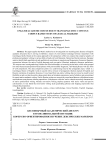
English academic discourse in translinguistic context: corpus-based study of lexical markers
Статья научная
The paper applies the Matrix method to an investigation into translinguistic features of English academic discourse that is serving worldwide a means of cross-cultural exchange between researchers with translingual skills. Based on the corpus approach to the comparison of the two corpora that comprise samples of professional academic writing in various fields of study (Art and Humanity, Natural and Social sciences), the paper seeks to identifyboth quantitativelyand qualitatively correlations in repertoire and frequencies of recurrent linguistic expressions between the native English-language and non-native (Russian) academic discourse performers. The corpora were investigated along with the use of lexical bundles, re-occurring lexical units, which were grouped into noun-based and preposition-based phrases with post-modifier fragments, verb-based phrases with any form of verb components. The data comparison points to a code-mixing trend at the syntagmatic layer, which is a translingual fusion of English words in accord with a mixture of syntagmatic relations typical of English and Russian variations of academic discourse. It was found that non-native writing does not reveal as much lexical flexibility as native writers do and to a large extent relies on formulaic expressions, most of which are not conventional for expert native academic writing. Native Russian writers use excessively noun-based phrases with abstract nouns and underuse noun phrases without prepositions. Verb phrases with that - and to- clauses are mainly characteristic of native professional writing whereas non-native writing employs patterns with active verbs and passive constructions. It was found that non-native writing lacks quantifying phrases and hedging expressions that mitigate the proposition.
Бесплатно
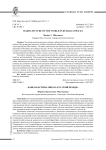
Habeo-картина мира в "Русской правде"
Статья научная
В статье рассматриваются посессивные отношения, отраженные в тексте «Русской Правды». Дается представление о прототипических посессивных отношениях, включающих субъекта-посессора, объект обладания и второго участника ситуации. Охарактеризованы посессивные ситуации приобщения, отчуждения и наследования объекта, преобладающие в «Русской Правде». В анализируемом тексте отмечена особая востребованность для передачи отношений собственности ряда глаголов, восходящих к одному корню, отражающему восприятие мира с позиций Habeo: изымати, емати, поимети, пояти, прияти, имати и др. Обоснована тесная связь категории посессивности с понятиями локативности и экзистенциальности, которая во многом определила наличие различных языковых средств для экспликации посессивных отношений: иметь-конструкций и быть-конструкций. С привлечением этимологических данных показана специфика выражения данными конструкциями отношений посессии, делается вывод о связи глагола иметь с «начальной точкой» владения, имения чего-то в своей сфере (брать, хватать), в отличие от глагола быть, который выражает прежде всего экзистенцию, состояние и становление этого состояния, но не посессию и ее начало. Утверждается, что в «Русской Правде», в отличие от современного русского языка, находит отражение восприятие мира с позиций Habeo: активное, динамичное, деятельностное владение одушевленным, неодушевленным объектом в рамках отношений собственности.
Бесплатно
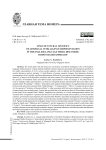
Статья научная
The article deals with the discursive construction of artificial intelligence (AI) in the English-language media discourse. Corpus methods establish semantic, figurative-perceptual and axiological specificity in the media representation of AI in various media segments, such as tabloids and broadsheet papers. Corpus-assisted discourse analysis includes: 1) identification of unique semantic domains that determine discourse interpretations of this socially significant phenomenon, followed by an analysis of their dispersion in narratives about AI; 2) analysis of the figurative-evaluative and value content of its media representation; 3) investigation of the specifics of broadsheet media and tabloid media representations of the AI concept. It was found that AI receives multiple media representations, in which its conceptual features represented by the lexical items of the semantic fields “Knowledge”, “Ability”, “Information and Computer Technologies” are supplemented and enriched by the lexical units of the semantic fields “Safety/Danger”, “Transformation”, “Ethics”. In media narratives about AI, the concept of “imitation of human abilities” is often associated with fake news, plagiarism, warfare, crime, climate change, and unemployment. Corpus data revealed that in the narratives about AI in broadsheet media, the lexical items of the semantic field “Robots” emphasize the similarity of AI with anthropomorphic entities; the semantic field “Competition” represents the idea of a rivalry between a human and a machine, as well as between countries, governments and companies; the semantic field “Warfare” actualizes the pragmatics of warning related to collective security and expressing public concern about the possible negative consequences of the development of AI. Popular media emphasize the androgenic nature of AI, its entertainment potential (“Games”), practical values related to health care (“Medicines and Treatment”); and the pragmatics of warning related to individual safety (“Crime”). The evaluative media representation of AI is formed mainly by ethical and practical, often negative, evaluative features transmitted through metaphoric images, intertextual references, and cultural models that determine the behavioural patterns of the discursive community members.
Бесплатно
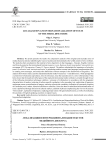
Localization and internationalization of texts of the media discourse
Статья научная
The article presents the results of a comparative analysis of the original and secondary texts of media discourse aimed at identifying the ways to localize and internationalize the verbal content of news websites. The study has been conducted on the material of news hypertexts in four languages - Russian, English, German and French, posted on the international Internet resource rt.com , Business Insider news portal, National Review newspaper, RTD Documentary Channel , L’Express journal. The authors substantiate the importance of using the terms ‘ localization ’ and ‘ internationalization ’ in translation studies to name inter-language transformations used in creating news messages, and analyze the definitions of these concepts in the frameworks of linguistics. The analysis shows that in many cases the standard translation model “source text translation text”, which presupposes a certain level of semantic equivalence, loses its relevance, since the secondary text is a new verbal product. It has been shown that the localized verbal space of the analyzed international media websites is created through the use of the following translation techniques: addition / omission of information in accordance with the pragmatic characteristics of readers, inclusion of culture-specific vocabulary in the secondary text, explication of toponyms and proper names, neutralization of imagery, omission of precision vocabulary, indication of a personal viewpoint of a secondary text’s author, historical reference to allusions. It has also been revealed that internationalization of texts is performed through omission of cultural markers, addition of phrases emphasizing the view on the country “from outside”, explication of toponyms, replacing proper names with generalized lexemes, as well as by indicating the positions of English-speaking countries on topical issues.
Бесплатно
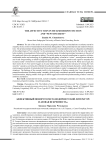
The Affective Turn in Metamodernist Fiction and “New Sincerity”
Статья научная
The aim of the article is to analyze pragmatic strategies and mechanisms to enhance narrative empathy, the key notion of metamodernist fiction that distinguishes it from postmodernist and modernist literary texts. The article postulates foregrounding of emotivity markers in metamodernist texts as a linguistic manifestation of the cultural logic of "new sincerity" in the contemporary fiction that is characterized by the lack of an explicit ludic modality of postmodernist fiction and by stressing means of producing emotional resonance on the part of the reader and their active perspective-taking. The article makes an original contribution to cognitive stylistics, multimodal studies and narratology by hypothesizing polyphony of narrative "voices", second-person narrative and visual foregrounding as effective pragmalinguistic tools of triggering emotive and cognitive empathy that increases reader's immersion in metamodernist fictional worlds. Using the novels by M. Porter and J. Egan, the short stories by J.S. Foer and D. Eggers as its case studies, the article proves the relevance of viewing the "new sincerity" concept as a driving force behind the authorial empathy towards fictional characters, which enhances emotionogenic potential of metamodernist fiction and contributes to reader's engagement with modeled emotive situations. The findings of the research testify to the importance of further research into "new sincerity" and potential mechanisms of inducing reader's empathy which is justly considered a powerful instrument for promoting social interaction, helping readers of all ages to inhibit aggression and develop understanding of others' motives, emotions and desires.
Бесплатно
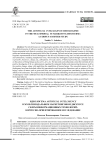
Статья научная
The article focuses on investigating the specifics of the Artificial Intelligence (AI) ideologeme in the website discourse of software vendors. The material of the study is the website discourse of Microsoft . The linguo-conceptual and discursive analyses have resulted in identifying the most frequent lexemes in dictionary entries and constructing the nominative field of the AI concept. We have carried out a corpus-assisted study of the linguistic representation of the AI ideologeme in the Microsoft discourse using AntConc and extracted keywords and collocations, including metaphorical ones, which make the ideologeme explicit through keywords such as responsible , businesses , change , etc., collocations: AI-ready culture , AI-human partnership , etc., metaphors based on the actions of living beings such as drive , dive , etc. The keywords and collocations create the intention-driven positive ideologeme of AI as a phenomenon regulated by competent bodies and empowering businesses to drive the positive change, along with amplifying the capabilities of human beings. The nonverbal means of the AI ideologeme have been described within the representative and interactive dimensions such as pictures of living beings, colors of nature such as green and blue, and metaphorical perspectives contributing to the discursive affinity of AI and nature. The corpus-assisted study has resulted in identifying the discursive representation of the AI ideologeme which is different from that of the dictionary entries describing AI as a machine capability to copy the human behavior.
Бесплатно
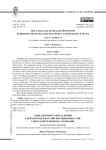
The language of health promotion in British and Russian digital media: a comparative study
Статья научная
The research explores the language of health promotion used in Health matters and Tak zdorovo - the national healthcare websites of the UK and Russia . The objective is to assess readability of the British and Russian texts as well as to reveal language properties and cultural implications of health promotion in national digital media. The comparative design of the study involves qualitative (contextual and interpretative) and quantitative (Compleat Lexical Tutor v.8.5 and Flesch-Kincaid grade) methods. The topic distribution results show that physical activity , healthy eating and weight control , tobacco smoking , alcohol dependence , mental health are raised in both cultures, however, the British corpus puts more emphasis on mental health issues compared to the Russian one. There are differences in ‘positive' vs ‘negative' approach in covering alcohol consumption issues. The findings on readability reveal higher rates of lexical density and lexical variety in the Russian corpus in comparison to the British one. However, the overall lexical coverage and readability index in the British (K-3) and Russian corpora (SIS - 8.68) are equally low, which means that the language of health promotion in both cultures is easy to understand. The Russian language of advice demonstrates frequent use of imperatives. The British corpus employs less categorical recommendation forms including modal verbs, create partnering communication styles and demonstrate a higher use of visual forms of health promotion. The findings revealing differences in rhetoric strategies (rational reasoning in British digital media vs emotional reasoning in Russian digital media) can be attributed to national and cultural implications.
Бесплатно
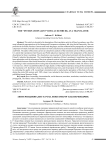
The “internationalist” Rosa Luxemburg as a translator
Статья научная
This article is devoted to the description of the translation activity of Rosa Luxemburg, one of the most influential representatives of the German and European revolutionary left-wing Social Democracy. She was proficient in the Polish, Russian, German and French languages, and she conducted active propaganda, an important component of which consisted in the translation of works and articles by prominent Social Democrats into German and Polish. The author of the article carries out a diachronic analysis of the translation activity of Rosa Luxemburg. It is noted that translations from Russian and Polish played an important role in the preparation of the doctoral dissertation by Rosa Luxemburg. The dissertation was presented in Switzerland and dealt with the problems of Poland’s industrial development. The translatological evaluation of Rosa Luxemburg’s translations has not yet been undertaken, and the relevance of the given research consists in the new interpretation of the ways of forming the political discourse of the Social Democrats in Europe at the turn of the 19th and 20th centuries. Analysis of Rosa Luxemburg’s main translations allows noting that the translation of Vladimir Korolenko’s book The History of my Contemporary, which was published after her tragic death, is of the highest importance among all the translations. The translation of V. Korolenko’s book was republished many times, and the prospect of the article consists both in evaluating the quality of R. Luxemburg’s translation and in analyzing the perception of this book in Europe during the entire 20th century until 1985, when it was included in the Library of World Literature of the Zurich publishing house Manesse-Verlag.
Бесплатно
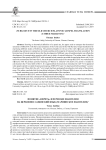
To believe in the old church slavonic gospel translation (codex marianus)
Статья научная
Drawing on theoretical definition of a speech act, the paper seeks to compare the theoretical semantics of BELIEVE with the lexical semantics of the words used in the Old Slavonic Gospel translation for expressing different modes of believing. The general principles in the use of the verb в4ровати and related paraphrasing utterances in comparison to Greek according to the majority of instances have been considered. The historical use of lexical material shows that the development of different ways of morphosyntactic use reflects the development of communication practices which are an index of societal behaviour. The author states it that the comparison of the speech act BELIEVE with contested lexical semantics provided the conclusion that a verb *věriti cannot be reconstructed for Proto-Slavic, but at the period under analysis the concept BELIEVE was verbalized by в4ровати with the primary personal meaning of “believe in someone” (the dative of a person is needed in constructions like “I have faith in Him”). It is supposed that the necessity to introduce the verb *věriti appeared when people started to extend the personal meaning of BELIEVE upto “an impersonal believed object” (sematic bleaching), and if they did it the verb *věriti might had been analogically produced as derivation of the primary noun. The author concludes that the translation technique of the first Slavonic Bible is more ad sensum than ad verbum and sometimes even reveals theological considerations of the translator.The speech act BELIEVE seems to display semantic bleaching as it loses its transcendent truth conditions and becomes more and more connected with impersonal believed objects.
Бесплатно
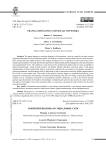
Translation genius and social networks
Статья научная
The paper attempts to consider changes in the translator's activity caused by the turn towards digital transformation in the institutional sphere. The analysis is based on material from German social networks, their content being the subject matter for the modern translator who is a specialist in cross-cultural and cross-lingual communication. The studydescribes the algorithm for implementing social management at the macrostructural and compositional levels. The emphasis is also placed on the institutional spheres that are most susceptible to digital transformation, which include nutrition and healthy lifestyle, education and many others. Total digital transformation of these institutional spheres is primarily evidenced by an increase in neologisms recorded in electronic databases, and dictionaries with an indication of their contextual use and their further popularization, first of all, in mass media texts. The results of the analysis lead the authors to conclude that training a new generation of interpreters and translators should include mastering the skill of working with big data, different corpora of texts, neologisms marked by or containing the industry component, as well as the need to develop glossary-type dictionaries for branches of knowledge. Considering the controversial content of social networks, the authors of the paper come to the conclusion that it is necessary to develop the code of ethics for the social networks translator.
Бесплатно
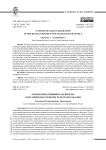
«Коммуникативный паразитизм» в российском сегменте телеграм-каналов
Статья научная
В статье рассматриваются проявления «коммуникативного паразитизма» как варианта коммуникативной координации в пространстве русскоязычных телеграм-каналов. Исследуется то, как подстройка под чужую коммуникативную продукцию начинает служить принципиально иным интересам и ценностям. Учитываются особенности новых медиа и условий технологически опосредованной коммуникации, а именно: интерактивность, рекомбинативность, мультимодальность и др., а также специфика высокой конфликтности общественно-политического дискурса, играющего значимую роль в процессах реализации власти и борьбы за нее. «Коммуникативный паразитизм» анализируется как в элементах описания телеграм-канала, так и внутри постов и комментариев подписчиков. Обнаружено, что, когда «коммуникативный паразитизм» используется каналом для построения собственного бренда и продвижения своего информационного ресурса за чужой счет, его проявления обычно ограничиваются элементами оформления. Установлено, что в идеологическом противостоянии отдельных социальных групп встречаются более сложные случаи, где «коммуникативный паразитизм» используется каналом для консолидации своей группы, ее положительной самопрезентации на фоне дистанцирования от противостоящей группы и ее дискредитации. В этих случаях «коммуникативный паразитизм» становится неотъемлемой частью защитно-атакующих стратегий, длительно реализуемых группой коммуникантов. В результате большое количество пользователей вовлекается в своеобразную языковую игру из переплетающихся и взаимодействующих заимствований, способствующую формированию групповой идентичности.
Бесплатно

